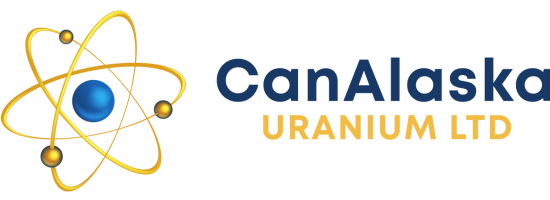Vancouver, Canada, June 4th, 2009 – CanAlaska Uranium Ltd. (TSX.V — CVV) (“CanAlaska” or the “Company”) has received drill assays and detailed geophysical information from the West McArthur Project winter drilling campaign. This drilling information confirms not only structural breaks and fault reactivation along the Grid 4 target area, but also hydrothermal alteration and trace uranium mineralization in two holes at, and below, the unconformity.

The Cdn$1.9 million, 5-hole exploration program comprising a total of 4,751 metres of drilling, together with corresponding TDEM geophysical surveys, tested a previously un-drilled zone located in the southern region of the West McArthur Project. In this new area, VTEM magnetic and electromagnetic airborne surveys, ground-based AMT and EM surveys identified a new, well-defined, but variably-conductive zone, approximately 6 km in length associated with apparent alteration in the sandstone column.
This winter’s exploration involved seven drill holes (WMA013 – WMA019) along 4 km of the Grid 4 trend, however, two of the later drill holes were terminated near surface due to drilling problems. The five successful drill holes tested four discrete targets. Two of these provided trace uranium mineralisation and associated geochemical alteration. The depth to unconformity ranged from 807 to 833 metres.

The first two drill holes of the program, WMA013 and WMA014, targeted a conductive zone in the south-centre of the 4km conductive trend. These holes encountered various levels of dravite and illite clay alteration as well as zones of strong fracturing in the sandstone column (dravite indicates a higher temperature of alteration, and is generally associated with uranium mineralisation in the Athabasca Basin). There was no significant uranium enrichment in these holes, however there were boron values in the sandstone above the unconformity of up to 77 ppm (2-3 times background). Down-hole geophysical probing indicated that the main target conductor was overshot by the drilling. Further drilling will be required to test the main target, which lies east of the hole WMA014) Drill hole WMA015, located 3.3 km northeast of the first two holes, tested the northern end of a strong conductive target. This drill hole encountered a zone of fracturation from 250 to 325 metres depth. There was dravite and enhanced illite clay alteration in the top 400 metres of the drill hole. Significantly, there was additional dravite alteration near the base of the sandstone and moderate fracturation in the last 30 metres of the sandstone column above the unconformity. There was no significant uranium enrichment intersected in the hole, but geochemical enrichment was present with slightly-elevated boron from 100 to 500 metres depth (40-60 ppm boron) and again from 750 metres to the unconformity (120-191 ppm boron). Further drilling to the northeast, in the stronger portion of the conductor, is required.
The most significant uranium mineralisation of the winter program was intercepted in drill holes WMA016 and WMA019, located 400 metres and 1,200 metres south of drill holes 13 and 14. Core results indicated a significant fault zone with vertical offsets between these two holes. The vertical offsets of up to 15.4 metres were present at the unconformity and also in the overlying sandstone. An offset of the trend of the geophysical conductor also indicates horizontal structural movement. Progressively variable offsets in the sandstone marker horizons also indicate that the inferred fault structure could represent a mineralizing event with multiple periods of reactivation.
Both drill holes WMA016 and WMA019 intersected favourable graphitic horizons in the basement. Above the unconformity, there was clay alteration, fracturation, and anomalous geochemistry in the sandstone Drill hole WMA016 exhibited generally-normal clay pattern, but with the presence of enhanced higher temperature dravite near the unconformity. Above this immediate zone, there were several fractured and friable zones between 680 metres and the unconformity at 807 metres, with an increase of boron from 40 to 917 ppm at the unconformity. There was also silicification from 750 to 785 metres and anomalous trace element geochemistry for uranium (0.9 to 3.7 ppm), and nickel (0.3-3.8 ppm) in the last 38 metres of the sandstone column. In the basement rocks the drill hole intersected strongly-graphitic pelites with one section from 909.0 to 909.5 metres assaying 0.055 % U3O8.
Drill hole WMA019, located 400 metres to the south of drill hole WMA016, exhibited the best uranium intersection of the winter program. This hole contained a generally normal clay pattern in the upper levels, again with silicification from 780 to 830 metres, with elevated uranium (to 1 ppm) and boron (to 90 ppm) in the last 14 metres of the sandstone column above the unconformity. The basement of drill hole WMA019 is predominantly semi-pelites with abundant leucosome. A sheared leucosome section of 2 metres from 880.2 to 882.2 assayed 0.034% U3O8. A major graphite zone was intersected from 946 to 968 metres.
In summary, the Company is very pleased with the test drilling results from Grid 4. The mineralized and altered rocks encountered in the drill holes show the potential for a uranium mineralizing system associated with graphitic pelite horizons. The 4km-long zone tested this winter appears to have multiple targets for future detailed evaluation. The Grid 4 area is only one of multiple mineralized target zones identified on the property by CanAlaska and Mitsubishi Development Pty Ltd. Continued exploration is expected on this and the other target zones during the summer of 2009.

All of the samples from the West McArthur project were submitted to Acme Laboratories Vancouver, an ISO 9001:2000 accredited and qualified Canadian Laboratory, for their Group 4B analysis. These samples were analysed for uranium and multi-element geochemistry by tri-acid digestion and ICP-MS. The samples were collected by CanAlaska field geologists under the supervision of Dr. Karl Schimann, and were shipped in secure containment to the laboratories noted above. Peter Dasler, M.Sc., P Geo. is the qualified technical person responsible for this news release.
About CanAlaska Uranium Ltd. — www.canalaska.com
CANALASKA URANIUM LTD. (CVV — TSX.V, CVVUF — OTCBB, DH7 — Frankfurt) is undertaking uranium exploration in twenty 100%-owned and two optioned uranium projects in Canada’s Athabasca Basin. Since September 2004, the Company has aggressively acquired one of the largest land positions in the region, comprising over 2,500,000 acres (10,117 sq. km or 3,906 sq. miles). To-date, CanAlaska has expended over Cdn$50 million exploring its properties and has delineated multiple uranium targets. The Company’s geological expertise and high exploration profile has attracted the attention of major international strategic partners. Among others, Mitsubishi Development Pty Ltd, a subsidiary of Japanese conglomerate Mitsubishi Corporation, has undertaken to provide CanAlaska C$10 mil. in exploration funding for its West McArthur Project. Exploration of CanAlaska’s Cree East Project is also progressing under a C$19 mil. joint venture with a consortium of Korean companies led by Hanwha Corporation, and comprising Korea Electric Power Corp., Korea Resources Corp. and SK Energy Co, Ltd. A Memorandum of Understanding has also recently been executed with mining partner East Resources Inc. to commence exploration on the NE Wollaston Project comprising a potential 100,000 metres of drill testing.
On behalf of the Board of Directors
“Peter Dasler”
Peter Dasler, P. Geo., President & CEO
Investor Contact: Emil Fung, Vice President, Corporate Development
Tel: +1.604.688.3211 Email: info@canalaska.com
The TSX Venture has not reviewed and does not accept responsibility for the adequacy or accuracy of this release: CUSIP#13708P 10 2.
This news release contains certain “Forward-Looking Statements” within the meaning of Section 21E of the United States Securities Exchange Act of 1934, as amended. All statements, other than statements of historical fact, included herein are forward-looking statements that involve various risks and uncertainties. There can be no assurance that such statements will prove to be accurate, and actual results and future events could differ materially from those anticipated in such statements. Important factors that could cause actual results to differ materially from the Company’s expectations are disclosed in the Company’s documents filed from time to time with the British Columbia Securities Commission and the United States Securities & Exchange Commission. Not to be construed as an offer to buy or sell securities of CanAlaska Uranium Ltd.

